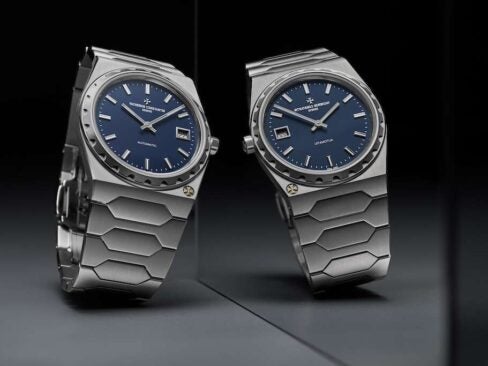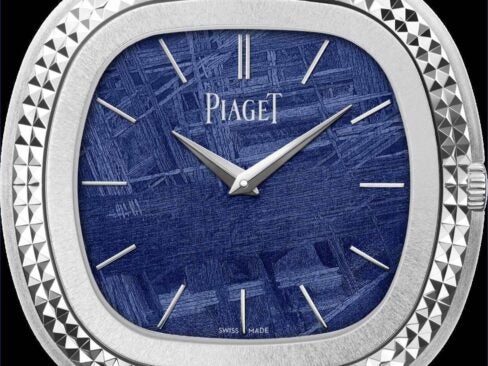AQUAMARINE

Aquamarine, the stone of the sea, ranges from greenish blue to deep blue in color and is part of the beryl family of gemstones.
It is most often found in locations that produce ordinary beryl such as Sri Lanka and Brazil.
BRILLIANCE
In layman’s terms, brilliance is how much a gemstone sparkles. Brilliance is measured by gemologists using a special scale that determines a diamond’s light return.
4 Cs
CUT: How a diamond has been cut, polished and to what proportions and symmetry are of utmost importance as these factors determine the life, brilliance and dispersion of the diamond.
COLOR: Most fine diamonds vary in shade from colorless to yellow, brown or gray. To determine the color grade, diamonds are compared to an internationally accepted master set of diamonds, the color of which ranges from D, or colorless (the most sought-after), to Z (the least desirable).
CLARITY: The clarity of a diamond refers to the amount, size, type and location of internal flaws (inclusions) or surface imperfections (blemishes) visible in a diamond using x10 magnification. All diamonds have imperfections in them. The “cleaner” the diamond, the higher the value.
CARAT: The weight of a diamond is measured in carats. A carat is 0.2 grams and there are 100 points (or 200 milligrams) per carat. With an accuracy of 1/100,000 of a carat, the International Gemological Institute’s scales provide a highly precise diamond weight that is stated on the institute’s Diamond Report to two decimal points.
DIAMOND

Diamond is the world’s rarest gemstone and nothing can match its superior hardness and durability.
The brilliance, scintillation and fire in diamonds set them apart from all other gemstones.
EMERALD
Emerald’s green color ranges from a rich bluish green to a bright pure green. Emerald is a rare and valuable gemstone believed to symbolize rebirth and love. Brazil, Colombia and Zambia are the most common sources for emeralds.
FANCY COLOR DIAMOND

Deeply saturated colors occur in diamonds, such as yellow, brown, orange, pink, blue, green, purple, red and more. The most intense of these shades are graded as “fancy” colors. If the color is more intense than “Z,” it is considered fancy.
GEMSTONE
A precious or semiprecious stone, specifically one that is cut, polished and utilized in an article of jewelry.
HARDNESS
Mineral hardness, as measured by the Mohs scale, describes the scratch resistance of a diamond or gemstone.
INTERNATIONAL GEMOLOGICAL INSTITUTE (IGI)

Established in 1975, IGI is the world’s largest independent laboratory for testing and evaluating gemstones and fine jewelry.
Consisting of graduate gemologists and accredited gem and jewelry appraisers, IGI is a consumer-focused global organization that provides objective and accurate grading, identification and appraisal reports of gemstones and fine jewelry, as well as offering gemological educational courses.
JADE
A hard, typically green gemstone consisting of the minerals jadeite or nephrite. Myanmar produces the finest quality jadeite. It can also be found in Guatemala, Russia and California.
KARAT
A measurement of gold purity. Pure gold equals 24 karats.
LASERSCRIBE
IGI’s US-patented process uses a laser beam that etches a diamond identification number (DIN) on the side of a gemstone so it can be easily identified by both the owner and a jeweler. While the inscription is visible to a specialist using 10x magnification, it is completely invisible to the naked eye, does not harm the stone and is permanent unless the diamond is repolished.
MAN-MADE DIAMOND

Also known as lab-created diamonds, man-made diamonds have the same chemical, optical and physical characteristics as diamonds mined from the earth.
NEAR-COLORLESS
Near-colorless is one of the color classifications (ranging from G to J on the scale), indicating a rare diamond (with respect to color).
OPAL
Opal is known for its dazzling display of rainbow color flashes—called “play of color”—naturally caused by the stone’s internal structure. Opal can come in various background colors; black is the most valuable and white is the most common. Most of the world’s opal comes from Australia.
PEARL

Pearls are unique among other gemstones because they form within a living organism.
Those originating in nature are rare. Cultured pearls make up the majority of those currently sold in jewelry. Pearls come in a vast array of colors, the most common being white, pink, gold, black and brown.
QUARTZ
A hard white or colorless mineral consisting of silicon dioxide, found widely in igneous, metamorphic and sedimentary rocks.
REGISTRATION AND RECOVERY
IGI’s Registration and Recovery ServiceSM catalogs a gemstone’s identification number in the Institute’s database. In the event of loss or theft, IGI will alert local police, search the auction market and notify jewelers of the missing article—providing optimum possibility of recovery.
SAPPHIRE

With its rich, velvety blue color, sapphire is one of the most popular and valuable gemstones in the world.
While blue is the most well-known color, the gem comes in a variety of hues. Sapphire is the sister gem to ruby, both of the corundum species.
TOPAZ
Topaz was revered by ancient cultures that associated it with the setting sun. However, this gemstone can come in many different colors besides “golden.” Pink and reddish orange varieties are known as “imperial” topaz, which is the most valuable. This gem’s most common color today is blue; a stable process turns colorless topaz into a bright vivid blue color.
ULTRASONIC CLEANER

An effective method that generates 42,000 ultrasonic sound waves per second, enough to clean most jewelry in three minutes or less using tap water or an optional cleaning solution.
VINTAGE
Generally refers to items that imitate the style of a previous era. Vintage jewelry can mostly be found at estate auctions.
WHITE GOLD

Alloying gold with white metals and plating it with a naturally hard element like rhodium transforms the color of gold from yellow to white.
International fine diamond jewelry standards indicate that gold purity should be maintained at 75 percent or 18K.
“X-TRA” ASSURANCE VIA INDEPENDENT CERTIFICATION
Diamond certification (or diamond grading) reports attest to the authenticity of a diamond and provide an independent gemological evaluation of the gemstone’s “4 Cs,”—carat weight, color grade, clarity grade and cut quality. The reports should come from an independent, unbiased gemological institute, such as IGI, that does not buy or sell jewelry and adheres to the one internationally accepted system for diamond grading.
YELLOW GOLD
Gold in its natural form has a warm and rich yellow color, which has been its allure for centuries. Modern jewelry manufacturing techniques add alloys like copper and silver to the gold to make the naturally soft metal harder and more durable.
ZOISITE
Zoisite is a species of gemstone, of which tanzanite is a variety. If left untreated, the gem material’s color is brown. Heat treatment is what reveals its beautiful bluish purple color (which is then called tanzanite).










